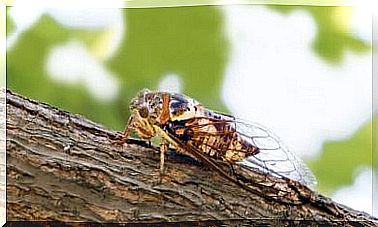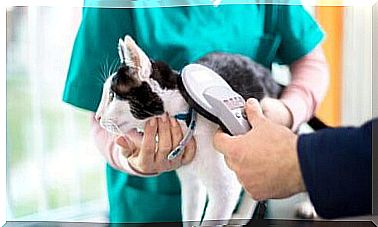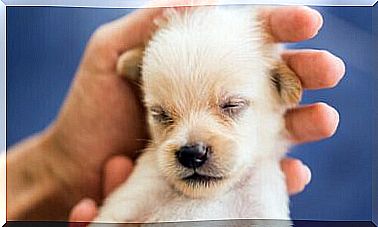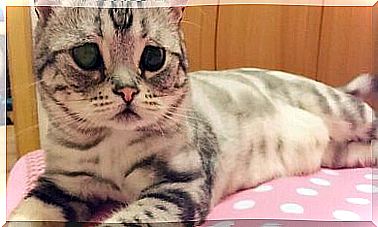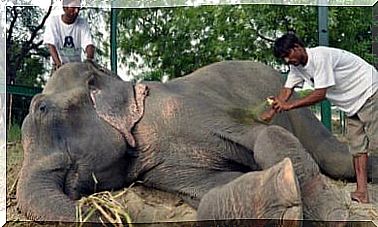Does Your Cat Have Feline Rage? 3 Signs To Find Out
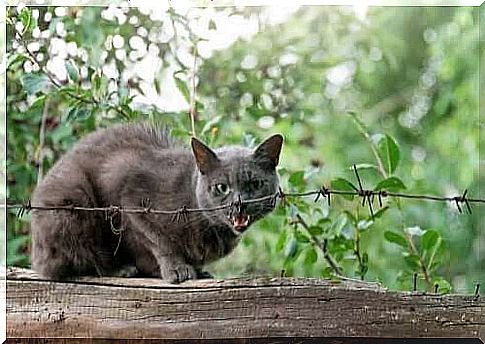
In this article, we explain the symptoms and signs that your cat has feline rage. A disease that, although mainly linked to dogs, can also affect cats.
Let’s find out how to identify feline anger. In fact, this disease can be very dangerous for our cats, and also for us.
What do we know about feline rage
It is a viral and contagious disease that can affect any mammal, although it is more common in dogs. Feline rabies is dangerous and, in addition to affecting the central nervous system and causing encephalitis, it can lead to the death of the animal.
To be infected, a cat must be bitten by another infected animal. In the case of felines, care must be taken, because cases of contagion are not so impossible.
In fact, the cat is a very brawling animal with its peers, especially if there is a female in heat or for territorial reasons. When the wounds he reports in his fights become infected and remain exposed, it is likely that the virus enters the animal’s body.

The good news is that feline rabies can be prevented by vaccination. The vaccine is applied around four months of life of the animal and is then repeated every year as a reinforcement.
If you find a street cat and take it to a vet, the feline rabies vaccine will be one of the first recommended. This is precisely because it is a very serious disease which, if left untreated, can lead to serious consequences.
Feline rage symptoms and signs
The first few days following the infection, you probably won’t notice anything unusual about your cat. In fact, during the incubation phase, the virus is asymptomatic since it is still developing inside the organism.
Over time, you will observe changes in attitudes and health status. Here are some of the typical signs of feline rage.
1. Strange behaviors
Since feline rabies mainly affects the central nervous system, the cat is likely to be irritable, more nervous or less tolerant of contact with people.
It is normal that in this phase it is extremely aggressive towards its owners or towards other cats, that it gets angry about anything or runs to hide.
Aggression, anxiety and restlessness are the main changes that occur in cats infected with feline rage. But if the cat has had a “wild” past, if for example it was a street cat, it could even turn into a docile and affectionate animal overnight.

2. Physical symptoms
Sometimes the changes in attitude in the cat can be attributed to other issues such as the time of year, the arrival of another animal in the family or being in heat. However, there are physical symptoms of feline anger that do not give rise to doubts.
Among the various unmistakable signs are fever, drooling, loss of appetite, increased water consumption, excessive vocalization, changes in meowing, apathy, listlessness and lack of personal hygiene. All symptoms that appear in the first stage of the disease.
3. Serious alterations
In the second step of feline anger, the cat’s behavior is much stranger than the initial behavior. This is precisely why this phase is known as the arousal or nervous phase.
In fact, the cat begins to run or walk compulsively, becoming more and more aggressive, without coordination, suffering from convulsions and biting itself (especially on the tail).
Finally, in the last step of feline rage (called paralytic), the symptoms become severe and irreversible. It can end up suffering from breathing difficulties, complete paralysis or paralysis of some parts of the body, asphyxiation and foam formation on the face. Once this stage has arrived, there is nothing more for the cat to do.
At the moment feline rabies has no cure, the best way to prevent your cat from becoming infected is through a preventive vaccination.
